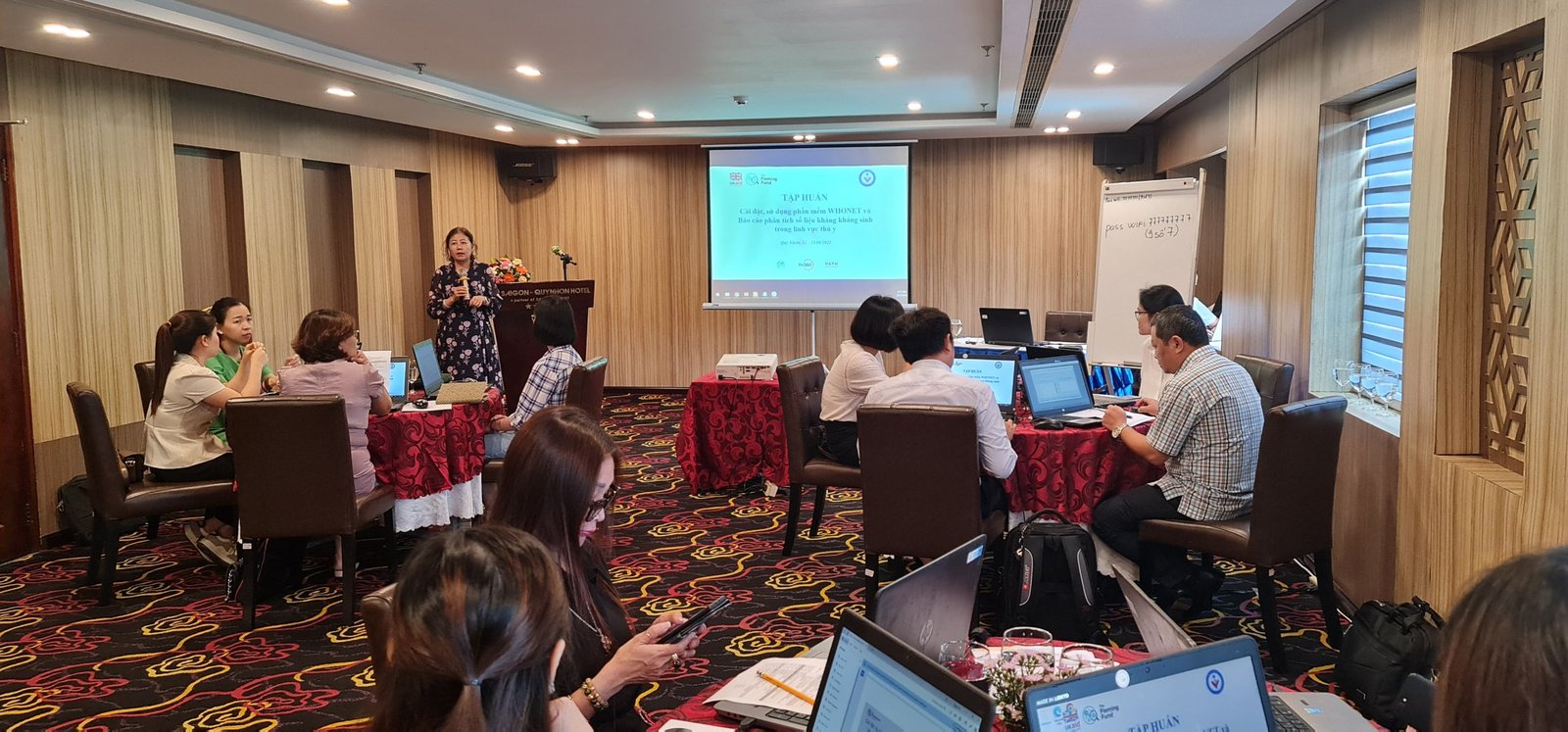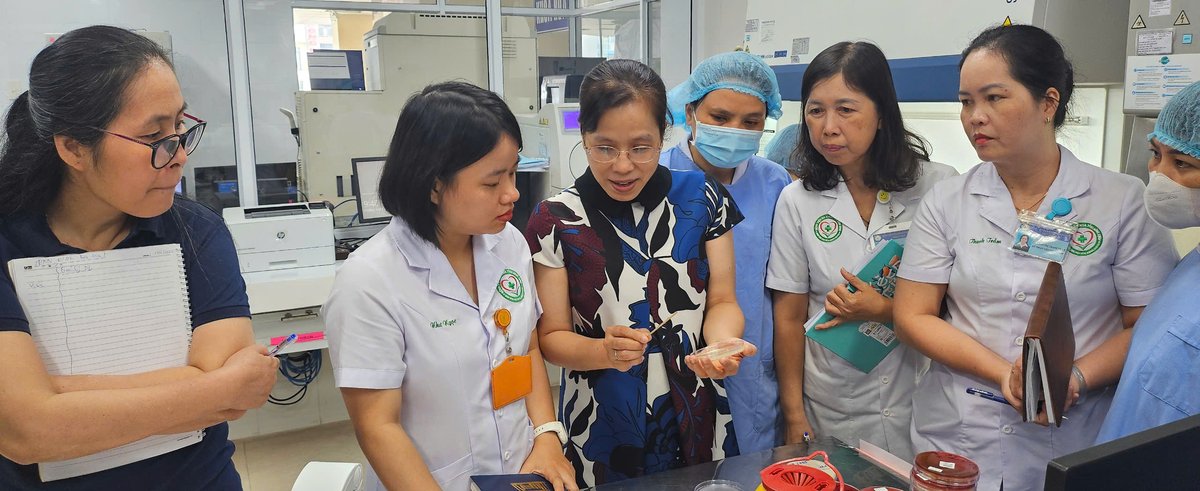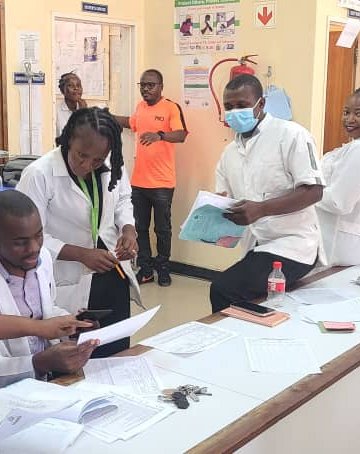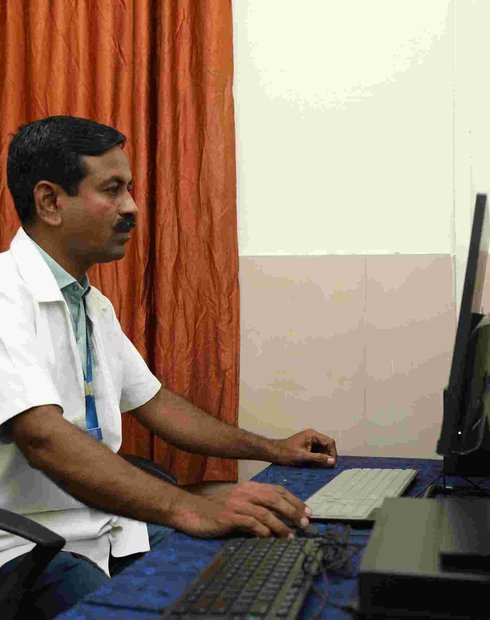Antimicrobial resistance (AMR) is a pressing global challenge with significant consequences in Vietnam.
Over the past seven years, PATH—working in close collaboration with the U.S. Centers for Disease Control and Prevention (CDC), Fleming Fund/FHI 360, and other partners—has supported the government of Vietnam's efforts to address AMR, including by supporting the Ministry of Health and Ministry of Agriculture and Environment with driving forward the government's National Strategy on AMR (2023–2030, vision to 2045).
PATH also supports these ministry-led efforts by helping to translate policy into practice and strengthen technical systems.
Vietnam has reached an important milestone by transforming its AMR surveillance system—shifting from fragmented, paper-based reporting to an interoperable, digital, and data-driven model across both human and animal health sectors.
Bridging gaps: A One Health solution for AMR
At the heart of this transformation is a commitment to One Health—a holistic approach recognizing links between human, animal, and environmental health.
PATH supported the development of two national AMR data portals—one for human health, one for animal health. These portals use standardized codes compatible with WHONET software and follow international guidelines like CLSI (Clinical and Laboratory Standards Institute) and EUCAST (European Committee on Antimicrobial Susceptibility Testing) to accurately interpret antimicrobial susceptibility tests. This ensures consistent, reliable data that helps health care professionals choose effective treatments.
To ensure alignment across the systems, PATH worked closely with the Department of Medical Services Administration (DMSA) and the Department of Animal Health and Production (DAHP) to meet the differing needs of hospitals conducting passive surveillance and animal health laboratories engaged in active surveillance. The portals feature validation functions designed to ensure that only quality-controlled and accurate AMR data are imported for analysis.
In March 2023, management of the human health AMR portal was officially transitioned to DMSA and is now fully operated by the Ministry of Health with support from a local IT partner. The animal health portal, originally developed to collect data from three designated laboratories, has now expanded beyond to include AMR data from livestock companies, research institutes, and universities.
Building on this foundation, PATH and FHI 360 have worked closely with DAH and the IT partner to integrate animal health AMR and antimicrobial consumption (AMC) reporting systems. This integration forms the foundation of Vietnam’s first integrated AMR-AMC platform, designed to ensure timely, accurate, and actionable data from lab benches to national dashboards.

Dr. Nguyen Thu Thuy, Deputy Director of the Department of Animal Health, opened the training course on data management for AMR surveillance. Photo: PATH/Pham Huong Lien.
Hands-on technical support
While digital systems created the backbone of AMR surveillance, successful implementation required hands-on technical assistance to help laboratories onboard to the system and troubleshoot challenges.
Since 2022, PATH, U.S. CDC, and partners, together with DMSA and national microbiology experts, have conducted more than 60 technical support visits to over 40 hospital laboratories nationwide. Each visit follows a structured approach:
- Pre-visit data review
- On-site assessment of lab procedures and data management
- Tailored technical coaching in microbiology and digital reporting
- Post-visit follow-up to track progress and impact
Technical assistance visits and hospital data submissions revealed several challenges among facilities participating in the AMR surveillance system, including low culture testing rates, inconsistent data reporting, and continued manual entry of WHONET files. In many hospitals, cultures were requested only after antibiotic treatment failed, and clinical teams often lacked access to AMR data to guide therapy. For example, in 2023, one hospital with nearly 1,200 beds processed an average of just 10 specimens per day, with only 3 positive cases per day.
To address these challenges, DMSA and its partners established a national AMR expert group, led by three clinical hospitals that serve as national reference laboratories. This group now provides structured technical support and applies standardized methodologies across AMR sites, helping labs improve testing protocols, enhance data quality, and strengthen coordination between microbiologists, clinicians, pharmacists, and infection prevention & control (IPC) specialists.
By 2025, this hospital had increased its capacity to process an average of 70 specimens per day, with 15 positive cases, demonstrating marked improvements in diagnostic practices and reporting.
Together, these efforts have embedded AMR surveillance into broader stewardship and clinical care strategies.
Local ownership for long-term impact
The collaboration with DMSA and the three national reference labs now focuses on ensuring these labs can independently uphold their role in the AMR surveillance system. This includes standardizing data submission processes, developing support tools such as checklists and reporting forms, and leading a structured data quality program that involves confirmatory testing with corrective feedback, WHONET file validation, and periodic site audits. These steps are designed to formally establish the role of the national reference labs as central coordinators of the AMR surveillance system, fostering national ownership and a sustainable, country-led AMR surveillance network.

A laboratory technician reviews AMR data at a hospital in Vietnam. Photo: PATH/Pham Huong Lien.
PATH’s approach goes beyond technology and training. Under DMSA’s leadership, together with U.S. CDC, FHI 360 and partners, we focus on system-level change.
By embedding AMR tools into workflows and building the capacity of local teams to sustain them, PATH is contributing to Vietnam’s long-term vision for resilient health systems. Vietnam’s efforts to combat AMR are still in the early stages, yet the progress to date offers a powerful example of what collaboration, digital innovation, and local leadership can achieve.



